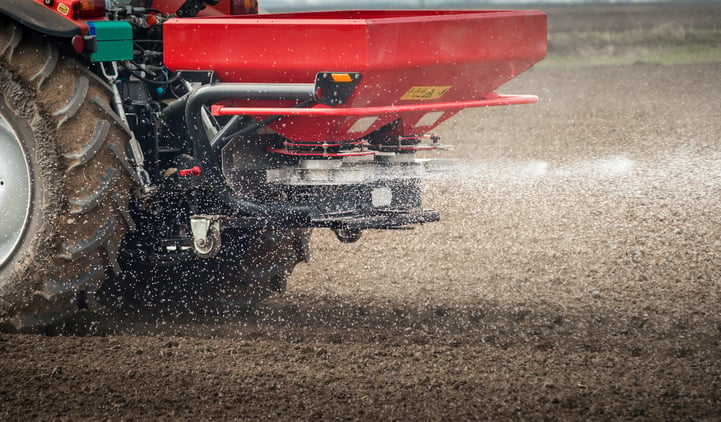By Nicole Wise on Jan 25, 2013 2:32:00 PM

What happens if the world’s supplies of phosphorus and potassium were to run dry?
Chemical fertilizers usually consist of nitrogen, phosphorus and potassium, otherwise referred to as NPK. All three elements are necessary to plant wellness, without which plants cannot survive.
As we deplete more and more potassium and phosphorus from the Earth’s reserves, fertilizer costs will rise. If the world ran out of phosphorus and potassium, we could be facing an agricultural disaster.
The problem is that the idea of running out of both phosphorus and potassium are becoming a reality.
Potassium and Phosphorus are limited resources?
We have been draining our supplies of potassium and phosphorus without considering the fact that they are (at least in the form we mine them in) a limited resource. While nitrogen can be synthesized from the air, potassium and phosphorus must be mined in the form of potash and phosphate rock.
Seventy percent of the world’s supply of potash is located in Canada and former Soviet countries. On the other hand, phosphorus is mined from phosphate rock, of which 85% of the world’s supply is located in Morocco. This means that both elements are held in a monopoly.
Perhaps a monopoly wouldn’t seem so scary if the elements existed in USA-friendly countries like Canada, but the stores of phosphorus are located in a geographically perilous region. The phosphorus deposits are located in the Western Sahara region of Morocco. Although Morocco currently holds this land, the UN recognizes that another party, the Polisario Front (a rebel group), as the rightful owners. If the fighting starts again, we could potentially lose access to phosphorus deposits.
If deposits of phosphorus and potassium were to run dry, the future of industrial agriculture could be threatened.
How can you reduce the use of phosphorus and potassium?
According to Grantham, cofounder and chief strategist for the Boston firm Grantham Mayo Van Otterloo, the “use [of phosphorus and potassium] must be drastically reduced in the next 20-40 years or we will begin to starve.”
In order to decrease our use of phosphorus and potassium, farmers may have to start using other methods to recycle the phosphorus and potassium already present within the soil.
Composting, compost teas and microbial products help restore the soil’s supply of phosphorus and potassium naturally. That's because these products contain species of microorganisms whose primary jobs are to unlock nutrients in the soil and convert them to useable forms for plants.
Using Microbials To Improve Soil Health
Holganix Bio 800+ charges soil with over 800 species of soil microbes to improve plant performance. What does that mean for you?
That means you build soil and root health, adding the benefits of better soil structure to whatever soil type you have. This translates to improved yield on crops, better playability on golf courses and a reduced need for fertilizers and pesticides on lawns.
Learn more about the science behind Holganix Bio 800+ below.
Works Cited
http://www.motherjones.com/tom-philpott/2012/11/are-we-heading-toward-peak-fertilizer
http://www.scientificamerican.com/article.cfm?id=phosphorus-a-looming-crisis


![Holganix Greater Green Goal [2025 Update]](https://www.holganix.com/hs-fs/hubfs/Blog%20headers%20%232%20%2811%29.jpg?width=224&height=112&name=Blog%20headers%20%232%20%2811%29.jpg)



![Holganix Greater Green Goal [2025 Update]](https://www.holganix.com/hs-fs/hubfs/Blog%20headers%20%232%20%2811%29.jpg?width=120&height=66&name=Blog%20headers%20%232%20%2811%29.jpg)



![Building Soil Health With Holganix [Webinar]](https://www.holganix.com/hs-fs/hubfs/2025%20Ag%20Webinar%20%234%20%283%29.jpg?width=120&height=66&name=2025%20Ag%20Webinar%20%234%20%283%29.jpg)





